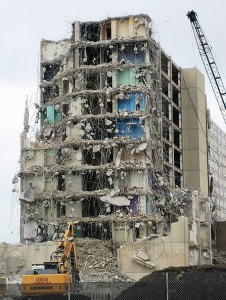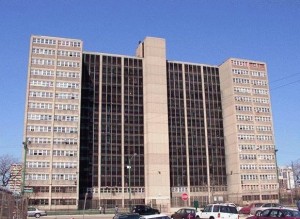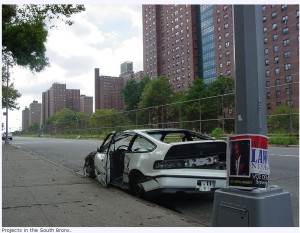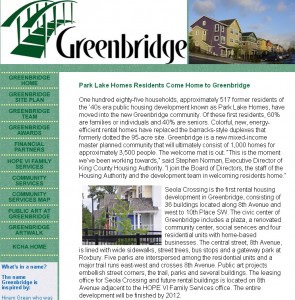Three-plus hours of snow now, and the National Weather Service says it may not entirely let up before midday Sunday (a “winter weather advisory” is now in effect through noon). Check the “live” traffic camera on our right-hand sidebar for the latest look at the roads; here’s the latest forecast – note tomorrow’s high is predicted as “near 30.” Brrrr!
Holiday party at Cafe Rozella today! (And one other holiday p.s.)
December 13th, 2008 Tracy Posted in Fun, Holidays, White Center Food Bank, White Center news 2 Comments »
4 pm, holiday party and open house at Cafe Rozella – Ricardo wrote about it here. Remember, bring donations for the White Center Food Bank. After that, if you are still searching for holiday fun in the area, one of Seattle’s most popular Christmastime attractions will visit West Seattle tonight — the Argosy Christmas Ship (5:15 pm Seacrest Pier, 8:50 pm Lowman Beach north of Lincoln Park, 9:40 pm Alki Beach; here’s its full-season schedule – if you miss it tonight, it’s back in West Seattle at Don Armeni Boat Ramp Sunday night, and in the South Sound at Des Moines and Dash Point Monday night).
Annexation update: Clarification from the county
December 12th, 2008 Tracy Posted in Annexation, King County, White Center news 7 Comments »
At least, that’s the purported source of this comment just posted this afternoon on our Monday night post in which we broke the news about the annexation-process deal between Burien, Seattle, and two fire districts. So we thought we’d give it its own post:
Members of the White Center and broader North Highline Communities:
We have observed the blog postings making interpretations of the proposed memorandum of understanding between King County, Burien, Seattle and Fire Districts 2 and 11 regarding proposed annexation boundaries for the cities of Seattle and Burien.
Questions and interpretations are being offered. The intent of this posting is to address both.
First, the MOU is a proposed memorandum of understanding between the cities of Burien, Seattle, King County, and Fire District 2 and Fire District 11. The MOU lays out general policy principles and specific activities that the parties agree to in support of transitioning North Highline from unincorporated to city status and to ensure fire and life safety services are not jeopardized by any annexation proposal by either city. This is not an “Interlocal Agreement” as defined by state law nor does it allow for “annexation by interlocal agreement.” The MOU is premised on each city filing their proposals before the Washington State Boundary Review Board and then, if approved by the BRB, the annexation question being put before the voters of North Highline for a decision.
THE MAIN PURPOSE OF THE MOU WAS TO RESOLVE THE ISSUES THAT WERE IDENTIFIED THROUGH THE BOUNDARY REVIEW BOARD PROCESS INITIATIED BY BURIEN THIS SUMMER:
• Fire and Life Safety Services Protected — In the event of annexation, Burien, Seattle, King County and the Fire Districts all agree to work collaboratively to maintain the level of fire and life safety services to North Highline communities and neighborhoods of North Burien, Arbor Heights and urban unincorporated areas of South Park.
• Agreement to Burien’s Proposed Annexation Boundary through minor adjustment — Many of the stated concerns with Burien’s proposed annexation boundary are resolved with a small adjustment that maintains Fire District 11’s Headquarters outside of the area to be proposed for annexation by the City of Burien.
• Agreement to coordinated phasing of Annexation Election Proposals for consideration by North Highline residents — The MOU recognizes that there is broad diversity of opinions and preferences in the North Highline communities regarding annexation to Seattle and Burien and acknowledges both cities represent reasonable governance alternatives. The MOU supports Burien’s proposal for annexation election for the southern portion of North Highline and Seattle’s proposal for an annexation election for the northern portion of North Highline.
• Agreement that both Seattle and Burien should have access to the same level of state funding if either city is able to move forward with annexation of White Center and the northern portion of Boulevard Park
— Both cities acknowledge that the cost of serving this area (“Area Y”) is greater than the cost of serving the southern area proposed for annexation to Burien (“Area X”). The MOU acknowledges this through the agreement to have all parties work collaboratively to amend the annexation state sales tax credit law so that both Burien and Seattle would have access to up to $5 million if either annex Area Y.
The aim of the proposed MOU is to remove the obstacles that stop both Burien and Seattle from making annexation proposals to the voters of North Highline. The mediated agreement presumes the decision to annex will rest in the hands of North Highline voters.
If you have questions or comments about the mediation agreement, please feel free to contact the King County Annexation Initiative at: annexation@kingcounty.gov. Thank you. – King County Annexation Initiative
White Center weather update: Snow threat lessens
December 12th, 2008 Tracy Posted in Weather, White Center news Comments Off on White Center weather update: Snow threat lessens
The latest “forecast discussion” from the National Weather Service, published minutes ago (just before 10 am), is backing away from snow possibilities (except “slushy” on “higher hills”) around here. Read it here. And still keep getting ready for those low temps starting later in the weekend and continuing on into next week – that’s where the true trouble could lurk.
White Center Community Safety Coalition: Evolucion’s owner faces his club’s critics
December 11th, 2008 Tracy Posted in White Center news 5 Comments »
Every time we’ve been to the White Center/South Delridge Community Safety Coalition‘s meetings, the WC dance club Evolucion comes up, and some people start venting. Some of that spilled over here, after our report on the club’s security manager attending last month’s meeting. Tonight, Evolucion owner Alfred Lopez accepted an invitation to meet with the group. (Watch the video above.) Questions for him revolved around parking, the club’s capacity, rumors that the club was expanding (it’s not, but he’s adding a fire sprinkler system) and whether there’s gang activity at the club.
The parking questions were the most frequent. Overall, the crowd claimed that the uptick in all manner of crime was due to the club. But several in the crowd pointed out that Evolucion cannot be blamed for everything, contending that several other establishments, such as The Wall and Brewsky’s are problematic as well.
Lopez says that he does not serve alcohol, but acknowledges that teenagers sneak out to drink, saying he has measures in place to deal witht that. Also, he uses off-duty officers to patrol his place, which led someone to say that if he’s using the police to patrol, then his place must be dangerous.
OTHER NEWS: The meeting opened with Seattle Police officer Adonis Topacio running out some crime stats for the past 6 weeks. He said that burglaries always go up around the holidays, so beware. Also, the BB gun burglars have been largely apprehended and a “substantial amount” of the goods they stole have been recovered. One new twist we hadn’t heard:The BB Gun bandits confessed to police that they were on their latest spree to raise cash to pay for the restitution they’d been slapped with from previous burglary busts.
Icy Roads: Don’t drive like an idiot, especially if you drive an SUV
December 11th, 2008 Ricardo Posted in White Center news 6 Comments »
Ok, so we live in a part of the country that gives us wet roads most of the year. So why is it, that when it starts to rain, we have wave of collisions by drivers who fail to heed simple cautionary driving methods? Really, you’d think everyone driving in Seattle just moved here from Southern California. Wait, many just did. So, for those of you who failed drivers’ ed, here are some general guidelines. Drive slower — I don’t care if your SUV is equipped with all-wheel drive and anti-lock brakes, you will need longer stopping distances in wet and icy roads. Allow greater space between your car and the guy in front of you. Should s/he hit the brakes, you will not ram into their rear end. Anticipate greater braking distance. It takes a longer distance to stop your car when you are driving on wet or icy roads. Ease into braking by anticipating stops, pedestrians or foolish drivers cutting you off: drive defensively. Let the jerk have his way. If some nitwit wants the right-of-way despite the fact that it is yours, let him go, his karma will catch up with him shortly. Finally, get a good book and some videos. If you don’t have to drive, DON’T. Stoke up the space heater, fireplace or wood-stove and enjoy the opportunity to cacoon. Most critically, don’t drive like an idiot! Be smart and be safe.
“Expanded” park and ride in White Center and Burien, under one of two newly released Viaduct scenarios
December 11th, 2008 Tracy Posted in Alaskan Way Viaduct, Transportation, White Center news 1 Comment »
At West Seattle Blog, we have running coverage (see it here) from the briefing at which the two “finalist” scenarios for the Alaskan Way Viaduct central waterfront section have just been unveiled to state, county, and city leaders. At least one of the scenarios also includes: “Park and rides would be expanded in Burien, White Center, and Shoreline.” Much more information to come. ADDED 4:21 PM: The “expanded park and ride” for White Center is mentioned in BOTH scenarios that now are under active consideration – “surface/transit” and “elevated bypass.”
Weather alert: Wind on the way as well as possible snow
December 10th, 2008 Tracy Posted in Weather, White Center news Comments Off on Weather alert: Wind on the way as well as possible snow
(Crossposted from partner site West Seattle Blog, because this is important safety info for our whole area.) Now that the end of the week is within sight, it’s time to take the forecasts REALLY seriously. Not only is cold weather, with possible snow, still predicted, the National Weather Service says it’s will get windy first – here’s an excerpt from the newest citywide forecast:
FRIDAY…WINDY. RAIN. HIGHS IN THE UPPER 30S TO MID 40S. SOUTH WIND 10 TO 20 MPH SHIFTING TO THE NORTHWEST 20 TO 30 MPH IN THE AFTERNOON.
FRIDAY NIGHT…RAIN AND SNOW. LOWS IN THE MID 30S.
SATURDAY…CLOUDY WITH A CHANCE OF SNOW SHOWERS. HIGHS IN THE 30S.
SATURDAY NIGHT…MOSTLY CLOUDY WITH A CHANCE OF SNOW SHOWERS. LOWS IN THE 20S.
SUNDAY THROUGH TUESDAY…PARTLY CLOUDY. HIGHS IN THE LOWER 30S. LOWS IN THE 20S
Safety information for “cold and icy weather” is also available at the Regional Public Information Network website; read it here.
Burien/Seattle annexation agreement followup: Read the document
December 9th, 2008 Tracy Posted in Annexation, Burien, White Center, White Center news Comments Off on Burien/Seattle annexation agreement followup: Read the document
White Center Now was first to report last night that Burien City Manager Mike Martin announced a mediated agreement with Seattle and two fire districts over the future of annexation proposals – current and potential – in the White Center/North Highline area. Here’s our original report from last night; now, Burien has posted the agreement online – read it here. Also a reminder, the two annexation open houses we reported last month are still on the schedule for January and February; full details here.
New in White Center: New Traditions – and you’re invited to an open house today
December 9th, 2008 Tracy Posted in Health, How to Help, new traditions, White Center news Comments Off on New in White Center: New Traditions – and you’re invited to an open house today
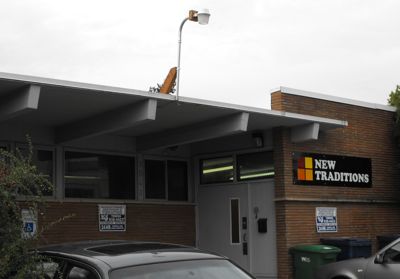
Across from the Salvation Army building, you’ll find New Traditions – a simple name that doesn’t reveal much about what happens there, or the fact the women who founded it, and opened it in White Center just two months ago, are doing something they say no one else in the Seattle area does: Offering chemical-dependency treatment for female clients, by female providers, while also offering care for their children, in cheery rooms like this one for babies:

New Traditions is accepting new clients, but that’s only part of why they’re inviting people to visit 3-7 pm today (9045 16th SW; here’s a map) – but they also will be happy to meet White Center and West Seattle neighbors who want to know what their work is all about. We visited recently to find out more ourselves, including what the special significance of an all-female setting can be – read on: Read the rest of this entry »
Burien, Seattle, and fire districts reach an annexation-process agreement for White Center/North Highline
December 8th, 2008 Tracy Posted in Annexation, White Center news 6 Comments »

(screengrab from tonight’s webcast of annexation announcement at Burien Council session)
8:54 PM: It’s just been announced at tonight’s Burien City Council work session. The councils of Burien and Seattle, and two fire commissions, have to sign off on the deal – but the cities and fire districts have agreed on a variety of points, after several weeks of mediated discussions, regarding Burien attempting to annex the area it’s been trying to annex (with one exception – the King County fire station at 112th/12th has been taken out of the zone, because Seattle says it’s important for protecting the Arbor Heights area) and Seattle POTENTIALLY trying to annex the rest of the White Center/North Highline area. More to come – Burien City Manager Mike Martin is laying it all out right now. ADDED 9:05 PM: Even once the elected officials agree, of course, residents of the respective areas would have to approve any annexation plan – and the deal gives Burien and Seattle till January 1, 2012, without either trying to interfere with the other’s respective potential annexation attempt(s); if the deals aren’t done by then, all bets are off. Another key part of the deal, besides the fire station: Burien will support state legislation that would allow Seattle, as well as Burien and smaller cities, to benefit from sales-tax credits relating to annexation – up to $5 million a year for 10 years. More discussion of this deal is expected at next week’s Burien Council meeting.
*
Times keep getting tougher for Traditional Newspapers
December 8th, 2008 Ricardo Posted in Businesses, Miscellaneous, Technology, White Center news 2 Comments »
As I write this post, the venerable Chicago Tribune and the Lost Angeles Times teeter on bankruptcy. The New York Times Company (NYT) plans to borrow up to $225M against its mid-Manhattan headquarters building to ease a potential cash flow squeeze. The NYT company has over $1B in debt. Both Seattle papers, The Seattle Times and the Post-Intelligencer, are announcing that the “dead tree edition” will be smaller in size, and presumably in content. All of the foregoing papers, and many others, have already made painful cuts to their staffs and likely will continue to make further cuts. Despite these losses, the online versions of all of these newspapers are enjoying more views than ever. There is no shortage of people wanting to read the news, it just so happens that online traditional media have not found a business model that monetizes these online eyeballs.
I for one, read far more newspapers now than I ever did when you had to buy your newspaper in print form. Paradoxical. I leave it to others to put forth the reasons and why-fors of this financial crisis in traditional media. But one thing I would add, traditional media have been very slow to adapt to changing technologies. As early as the mid-90s anyone with any sense knew that the future lay online. Yet it took well over a decade for most newspapers to recognize the need for an online presence. Even then, they still failed to fully comprehend the trends in social media and the net. The irony is that you can read the NY Times technology section to catch up on web trends and wonder if the editor is also reading the same section. I suspect that there is a means vs. substance disconnect in journalists, especially the old school types. Whatever it is, they better catch one quick cause they are dying a slow and painful death.
Controversy sparked by trial involving White Center car chase
December 6th, 2008 Tracy Posted in Crime, White Center news Comments Off on Controversy sparked by trial involving White Center car chase
A deputy goes on trial next week, and a flyer urging support for him is sparking controversy – read about it in the Times.
Random thoughts on blogging
December 2nd, 2008 Ricardo Posted in Government, People, White Center news 5 Comments »
Back in the day when the only news was the old media (traditional newspapers, TV, news wire services), everything was filtered by arbiters of acceptable opinion. Many was the time when I pulled my hair reading nonsense in some newspaper, wanting to call the reporter and ask, “what the f*ck were you thinking?” I wrote letters to the editor and some of them got published. I remember the New York Times calling me to confirm stuff about my background that only the FBI would know. Even then they polished my comments and turned them into digestible sound bites.
The internet and the blogosphere has completely changed the rules of the game. The “trad” media has yet to catch up, never mind comprehend the changes which have taken place. Our sister site, the West Seattle Blog, is an example of people who not only comprehend the new medium but are doing an end run on the trad media. Today, there are literally millions of blogs, accessible to anyone with an internet connection. And the highest rated internet sites are themselves blogs: yes blogs draw more readers than the New York Times or the Washington Post. It is hardly an understatement to state that we are in an information revolution, perhaps as profound as the invention of the Gutenberg Press.
So what does this have to do with White Center? Plenty. News, events, anything that happens in our community is immediately communicated and it is communicated without the establishment media deciding what is or is not “newsworthy.” Personally, I think this is a great development. Democracy actually returning to its roots.
Which brings me to my critics. I have been posting on various topics of concern to the White Center community. In the process of doing so, I state, frankly and openly, what I believe. I am not asking anybody to like what I have to say. People have certainly expressed their chagrin over various political positions that I have taken. To them, I say, in the spirit of democracy, raise your voice and dissent. But don’t tell me to shut up! Wrong man. Really wrong. If you really feel that strongly, then start your own blog. I certainly hope that people will see this as the commons in which all can express (reasoned) views.
So now that I’ve said my piece, have at it. Just try and be civil and smart when posting, which is more than I can say for my own views. Peace.
Greenbridge: The Failure of the Cabrini-Green Model of Public Housing and the Rise of the New Urbanism
November 28th, 2008 Ricardo Posted in Crime, Development, Greenbridge, Real estate, Sustainability, White Center, White Center news Comments Off on Greenbridge: The Failure of the Cabrini-Green Model of Public Housing and the Rise of the New Urbanism
The modern debate on urban housing policy takes as its starting point the post-World War II period when the country invested heavily in developing cities and its suburbs. An outgrowth of the New Deal was the belief that government should ameliorate the problem of housing for those unable to afford the cost of commercial or private housing. The response to the housing problem was a mixture of modernist thought, good intentions, government bureacracy, racial attitudes and local politics. While this subject is vast and would require tomes to fully comprehend it, we are here most concerned with the present moment in Seattle’s urban design and specifically the philosophy behind the Greenbridge Project.
The model against which much of the current thinking pivots is the Chicago Housing Authority and its notorious housing projects such as the Cabrini-Green projects. Witold Rybczynski is an architect and an astute observer, with a sweeping knowledge of urbanism and a very accessible writing style. I was introduced to Rybczynski’s writing when I was designing a home about 15 years ago and happened upon his meditative tome, “The Most Beautiful House in the World.” Rybczynski took Cabrini-Green as a paradigm for the development of urbanism for a 1993 article entitled, “Bauhaus blunders: architecture and public housing – 1950s public housing estates Cabrini-Green, Chicago, Illinois, US“:
Cabrini-Green is but one of the most notorious housing projects known for its drab and sterile concrete towers of festering poverty, rampant crime, trash-strewn stairwells and unmitigated squalor. Most of the towers are now being torn down.
The oldest housing on the site dates from 1941, not long after the Housing Act of 1937 that signaled the first involvement of the federal government in funding housing for what there then called the deserving poor. Frances Cabrini Homes was named after a soon-to-be-canonized Chicago nun, famous for her charitable work, and it was built on the site of a notorious Italian-American slum kown as Little Hell. The new housing consisted of almost 600 dwellings in two- and three-story brick buildings; the total area of the project was relatively small: sixteen acres. The unassuming architecture of these row homes–every dwelling had its own front door on the street–was not substantially different from the popular urban housing then being built by the private sector in the surrounding city. The brick facades even incorporated some decorative elements. The overall design, like that of most prewar public housing projects, is modest but unremarkable; it was taken for granted that poor people would prefer to live lie everyone else. (emphasis added)
Although Cabrini-Green has become synonymous with large government-run slums, they were not the largest or worst of its kind. Hunt D. Bradford has written a concise piece on the Robert Taylor Homes, a larger Chicago Housing project in piece entitled, “What went wrong with public housing in Chicago? A history of the Robert Taylor homes.”
The consensus it that the project tended to congregate poverty and stigmatize the residents. As articulated by Rybczynski:
Although Cabrini-Green occupies almost as much land as the Loop itself, it is not the biggest public housing project in Chicago–that dubious honor belongs to Robert Taylor Homes, said to be the largest public housing project in the world. But Cabrini-Green was the first of the big projects, and it did become a model for how municipal authorities would rehabilitate deteriorated inner-city real estate and provide large amounts of public housing. The solution–bulldoze existing houses and replace them with tall apartment slabs spaced far apart in open parkland (created byh closing off existing streets to make immense “supper-blocks”)–reflected the prevalent social and architectural thinking of the time. As Bauer pointed out, his was not how the majority of Americans really lived–or would choose to live–but the idealistic housing reformers felt that they knew best.
Architects and planners maintained that high-rise buildings were better because they occupied less land, and provided their occupants with sunlight and unobstructed views, but the Chicago Housing Authority was probably attracted to Modern architecture for the same reason that many commercial developers were partial to the designs of Mies van der Rohe–their cost. The truth is that standardized, stripped-down, and undecorated tall buildings can be erected quickly and inexpensively. It is also likely that the plain architecture suited the puritan view of many Americans–and certainly of the housing reformers–who felt that social housing should not be fancy. Soon, utilitarian high-rise apartment towers were accepted as the best solution for public housing.
High-rise slums
However, it was one thing to build apartment towers for the upper-middle-class, as Mies did, and quite another to adopt them as solutions for housing the poor. The well-off have doormen, janitors, repairmen, and baby-sitters; the poor have none of these things. Without restricted access, the lobbies and corridors were vandalized; without proper maintenance, elevators broke down, staircases became garbage dumps, roofs leaked, and broken windows remained unreplaced; without baby-sitters, single mothers were stranded in their apartments, and children roamed unsupervised sixteen floors below. In Cabrini-Green, there were problems with the design of the buildings: To save money, no private balconies or terraces were provided, access galleries and elevator lobbies were left open to the elements (in frigid Chicago!), and despite the lack of air-conditioning, the unshaded apartment windows of the tall buildings faced east and west.
Equally unsuccessful was the overall layout which dispensed with the familiar street and supplanted it with parkland, although what little landscaping there was quickly disappeared and was replaced by beaten dirt and asphalt parking lots. In any case, the open pedestrian spaces were problematic: windy, unappealing, and more crime-prone than conventional streets and sidewalks overlooked by individual homes. In the name of housing the poor, the well-meaning social reformers of the 1950s invented a new type of urbanism, quite foreign to any previous American ideal of city planning. It is hardly surprising that the projects acquired a social stigma. This, as well as crime, drugs, and poor management, explains why today one-third of the apartments at Cabrini-Green remain unoccupied [and are now being demolished].
The reaction to the failure of Cabrini-Green style projects was a return to a style termed, the New Urbanism. Again, Rybczynski:
Which brings us to the Greenbridge, High Point and Holly Park developments in Seattle. Each of these projects reflects completely the philosophy of the New Urbanism and the rejection of the Cabrini-Green model. The development are designed to mix inhabitants of different income levels. As well, the housing is of a human scale with an emphasis on street life, walkability and sustainability. Most critically, these developments aim to look like housing, that anyone, regardless of their station in life, would choose to live in.
Thanksgiving Poem
November 27th, 2008 Ricardo Posted in White Center news Comments Off on Thanksgiving Poem
Thanks
Listen
with the night falling we are saying thank you
we are stopping on the bridges to bow from the railings
we are running out of the glass rooms
with our mouths full of food to look at the sky
and say thank you
we are standing by the water thanking it
smiling by the windows looking out
in our directions
back from a series of hospitals back from a mugging
after funerals we are saying thank you
after the news of the dead
whether or not we knew them we are saying thank you
over telephones we are saying thank you
in doorways and in the backs of cars and in elevators
remembering wars and the police at the door
and the beatings on stairs we are saying thank you
in the banks we are saying thank you
in the faces of the officials and the rich
and of all who will never change
we go on saying thank you thank you
with the animals dying around us
our lost feelings we are saying thank you
with the forests falling faster than the minutes
of our lives we are saying thank you
with the words going out like cells of a brain
with the cities growing over us
we are saying thank you faster and faster
with nobody listening we are saying thank you
we are saying thank you and waving
dark though it is
– W.S. Merwin
School that’s moving to White Center needs help now
November 25th, 2008 Tracy Posted in How to Help, Schools, White Center news Comments Off on School that’s moving to White Center needs help now
We’ve also written about this on West Seattle Blog, but White Center businesses and others may also be interested in helping a school that’s about to move to WC — West Seattle Montessori. They’ve lost their longtime WS home because of a development project, and they’re renovating a building next to the King County Library’s White Center branch, in hopes they’ll be ready to move in during the winter break. First, they’ve got a fundraising auction coming up December 5th, and they’re looking for donations for the auction as well as some help for the move – here’s what Sandra Kutz-Russell told us:
As for the auction, we need anything and everything; we are grateful for each item we are given! We will have both a silent auction and live auction. Keep in mind that we are a little auction with big dreams! At other auctions I have attended, trips, condo weekends, behind the scenes tours, chef taught cooking classes, signed books, CDs and sports equipment are always top sellers. Dinners are popular and services too! Because our auction is so close to the many winter holidays, Hanukkah, Christmas, Kwanzaa and Eid Al-Adha related items would be well received. Anything handmade seems to sell very well!
We are a school in need of help, help with our auction, help with the move, help with new playground equipment and rubber playground surface. Heck, the fence alone cost $11,000! Can we ask for a donation of printing services or truck rentals and boxes? What about a moving company or even plants for the landscaping? We do need a tree moved! It is a Japanese cherry tree that was planted in memory of a 1st grader’s mother who passed away of cancer. That little girl started college this year!
I can be contacted by e-mail, or by calling the school at 206 935-0427 and leaving a message for anyone on the auction committee, Brenda, Renee and Sandra.
You can e-mail Sandra at: skutzrussell@yahoo.com
Coming on Sunday: Let’s talk about Greenbridge and the Future of White Center
November 22nd, 2008 Ricardo Posted in White Center news Comments Off on Coming on Sunday: Let’s talk about Greenbridge and the Future of White Center
Greenbridge and High Point are major developments in the West Seattle and White Center communities. Each is well in progress and the results are already changing the faces of the respective communities. Emotions often run high when discussing the planning and execution of these mega-projects. So join in a discussion of Greenbridge and the future of White Center.
News from not far away: Shooting at Southcenter Mall
November 22nd, 2008 Tracy Posted in Crime, White Center news Comments Off on News from not far away: Shooting at Southcenter Mall
First online report is from KOMO News – says one person’s been shot and is undergoing CPR. Deputies are searching the mall, according to the scanner. More as we get it. 4:31 PM UPDATE: We will post any major developments here when the info becomes clearer – but we will be tracking it more closely for now at partner site West Seattle Blog (here’s the post that’ll be updated) 4:53 PM UPDATE: Times says 2 victims, which is what we also heard on the scanner a few minutes ago. No word on conditions. 9 PM UPDATE: We know a lot more about the victims. A 16-year-old boy is dead, a 15-year-old boy in the hospital. No one under arrest yet. The WSB post linked earlier in this one has first-person stories from local people who were at the mall when it happened.
White Center/South Delridge Community Safety meeting moved
November 22nd, 2008 Tracy Posted in Crime, How to Help, Safety, white center community safety coalition, White Center news Comments Off on White Center/South Delridge Community Safety meeting moved
Usually the White Center/South Delridge Community Safety Coalition meets toward the end of the month, but not this time – we’ve just received a reminder that the next meeting, last one of the year, will be on December 11th, different location too — SW Boys and Girls Club, 9800 8th SW (map), 6-8 pm.


